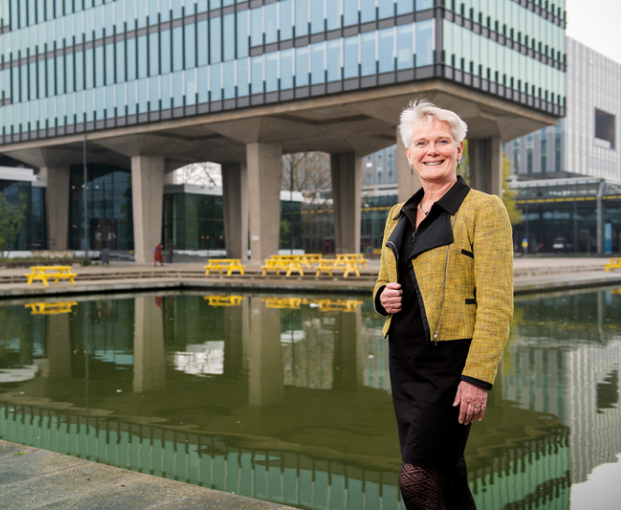
The Dutch government designated Life Sciences & Health as one of the ten top sectors in the country which contributes substantially to global societal challenges. Over the past decade the sector has developed considerably which is evident by the spread of science parks spreading across the country, the seat of the European Medicines Authority (EMA) being located in Amsterdam and the Jansen vaccine HQ in located in Leiden.
" Science parks are hotspots for attracting foreign investment into research & development
The Life Science & Health Top Sector (LS&HTS) is one of the ten top sectors, alongside Logistics, Energy and Chemistry, among others. One of the aims of attracting biotech, pharmaceuticals, med-tech and vaccination is to stimulate innovation and improve cooperation between the ‘triple helix’ of knowledge institutes, governments and industry.
The other is addressing societal issues. “With only economic gain we will not make it, there must also be an eye for the major societal challenges,” says van Vilsteren. “That is why the government of the Netherlands has a mission for people to live five years longer, in good health by 2040.
You call this outlook a moonshot. Another aim is to close the social gap in life expectancy between. How big is that gap and what causes it?
“People with higher educations live 6 to 7 years longer on average than people without professional qualifications. In a prosperous country like the Netherlands this is not acceptable. Since lifestyle and the living environment impact life expectancy we started a project for future-proof development places, or schools. Schools are focused on sitting in class and taking lessons. However, building developers now provide all kinds of new ways to encourage movement; from hiding lifts to making stairs extra visible. Because of this broader view of Life Sciences, stakeholders such as Bouwend Nederland are also partnering with us.”
Improving people’s lifestyle and living environment is one of the social objectives. What are the others?
“Think about good accessibility of care and improved care for the chronically ill, but also allowing dementia patients to participate in society for longer, in a high-quality way. By investing in innovation and cooperation we can also export our knowledge and so increase earning potential for the Netherlands.”
Science parks play a key role in driving that innovation and collaboration – how do you view the Dutch infrastructure for Life Sciences & Health?
“Science parks are super-relevant for LS&H as incubators for innovation. They cluster knowledge and by sharing facilities with each other, science and business come into contact far faster. By running programmes – courses and workshops – they guide people in entrepreneurship or collaboration. A new trend is the move away from generic to clustered accelerator programmes. With this focus on such as biotechnology and medical technology, coaches and investors can more easily hook up with their targeted domains.”
What does the development of science parks deliver in concrete terms?
“Science parks are hotspots for attracting foreign investment into research & development, ensuring the Netherlands remains a leader in LS&H, thereby attracting new companies. An example is MSD is setting up Organon as a spin-off in the Netherlands.
How does the LS&H Top Sector contribute to this?
“We are investigating how to create additional capacity at several science parks. Partly to create a buffer for larger companies with growth ambitions, but also to attract smaller companies. If they can use offices and laboratories here without making large investments, with the proximity of investors and capital, that is definitely an advantage.”
The Netherlands also managed to bring in the European Medicines Agency (EMA). What do you think is the appeal of the Netherlands?
“We are a reliable and predictable country, politically and financially. That is important because companies and organisations want to settle here for the long term. We have immense knowledge in LS&H at universities and in the private sector.”
Any room for improvement?
“Converting knowledge into products and applications, especially in the field of biotechnology and in our data infrastructure. During the corona crisis patients were transferred by ambulance clutching their medical files. This made the urgency of good data infrastructure very clear nationally and internationally.”
What was the impact of the pandemic on LS&H?
“Corona had a huge impact. Just look at vaccine development and testing capacity and the discussions around it. We revisited our mission and quickly concluded it was still relevant. However, we expanded the lifestyle and environment approach to include ‘being better prepared’. We need to come up with new measures to cope much better with future pandemics.”
Any concrete measures under execution?
“An international programme has been set up to share hypotheses around the treatment of infectious diseases such as COVID-19. We are capturing a far more data and early signals that indicate which therapy works or doesn’t work for certain types of patients.”
If applying scientific knowledge in practice is an area for improvement, how is the government and the LS&H Top Sector contributing to this?
“An example in the field of regulatory medicine is the creation of a consortium with five universities and the private sector. The Ministry of Economic Affairs released funds to make the scientific work of that consortium applicable. For instance, within regulatory medicine, we are trying to bring the whole chain together from an idea to a solution for application to patients. EZ also a set up an incentive fund to help university startups and spin-offs in particular.”
How accurate is the Government’s understanding of how to support Life Sciences & Health?
“It’s a trade-off. Top sectors are making it clear where investment is needed. The government must link social goals to these investments. We need to avoid a band-aids approach and steer towards targeted and applicable innovation.”
